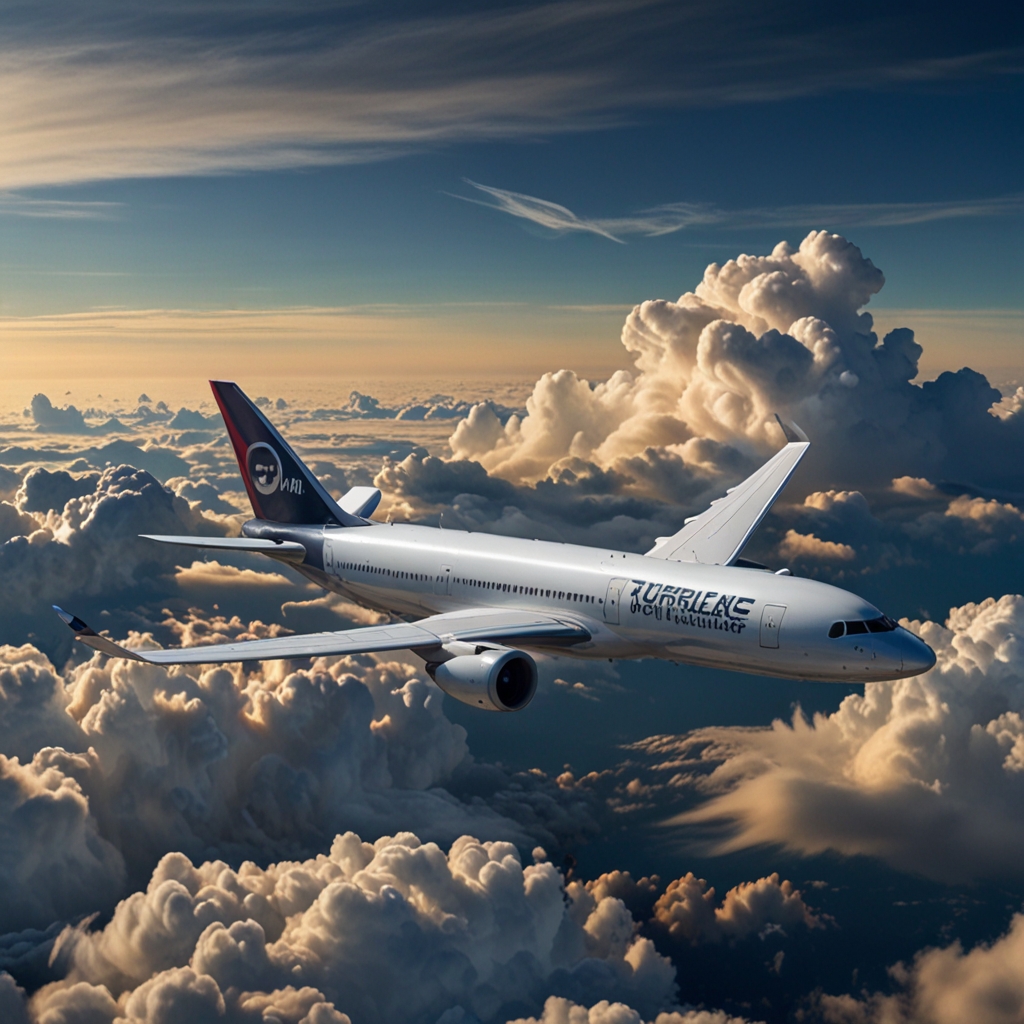
Some describe airplane travel as exciting, while certain people might experience contrasting feelings towards the same flight; it depends on the comfort level of any individual. However, any passenger on an aircraft under the ‘influence of turbulence’ adheres to distress, and physical and even emotional discomfort.
In direct words, turbulence is a phenomenon that occurs when the air currents flowing around an aircraft become unstable. It can cause any aircraft to experience sudden, unpredictable movements that can be felt by the passengers and crew on board.
After all, the word itself comes from the Latin word “Turbulentia” which means a disturbance, an agitation.
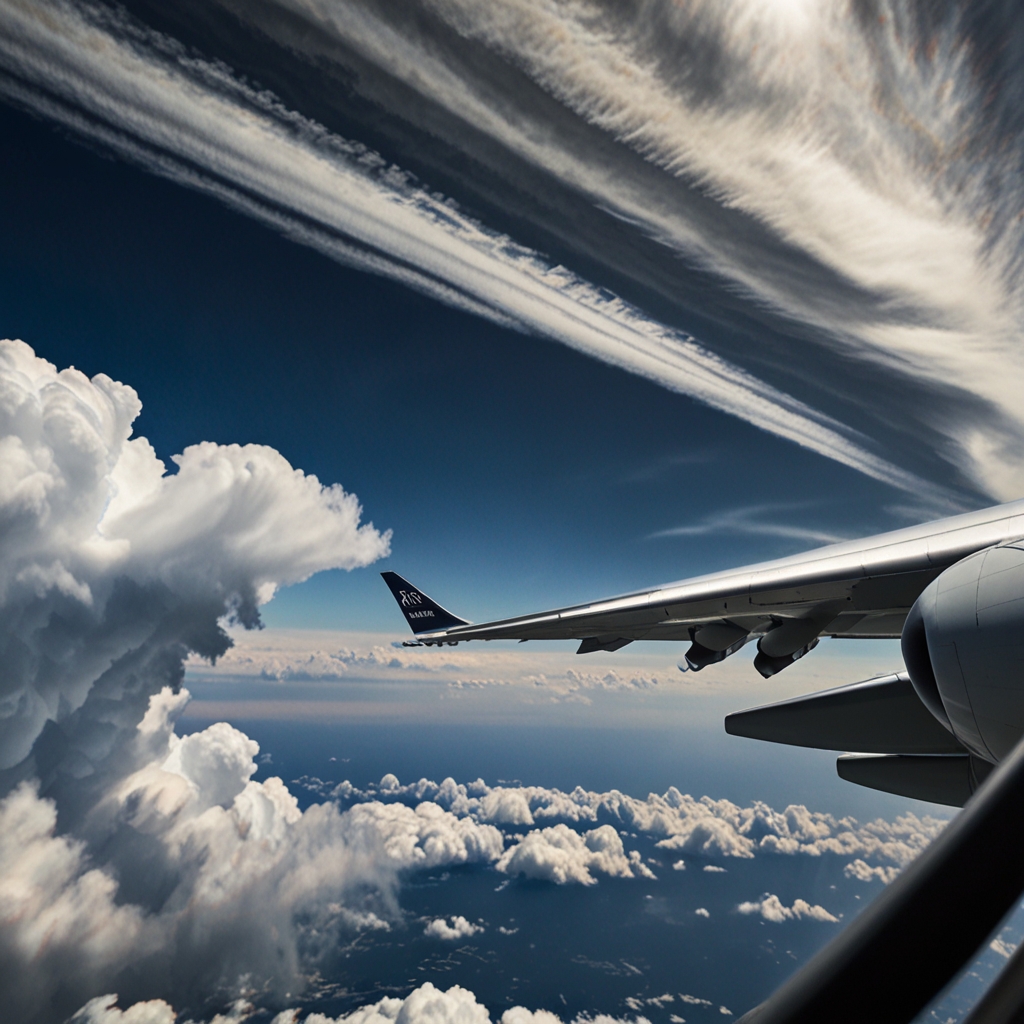
The most recent example of turbulence was the flight SQ321 operated by Singapore Airlines that took off from Heathrow and amidst turbulence over Myanmar resulted in the death of a passenger. Consequently, the CEO of Singapore Airlines poured out a heartfelt apology to the deceased and onboard passengers, who went through, in his words, “the traumatic experience”. This even led the airlines to change seatbelt policies to avert the possibility of such an accident again.
Prior to this event, a year or so ago, a Lufthansa flight that took off from Texas experienced Clear Air Turbulence when it was 37,000 ft above the ground. A passenger even described this turbulence, which left 7 in hospital for minor injuries, experienced by Airbus A330 over Tennessee as movie-esque. Other passengers on the flight also described the turbulence as “shocking” and “like you’re in slow motion.”
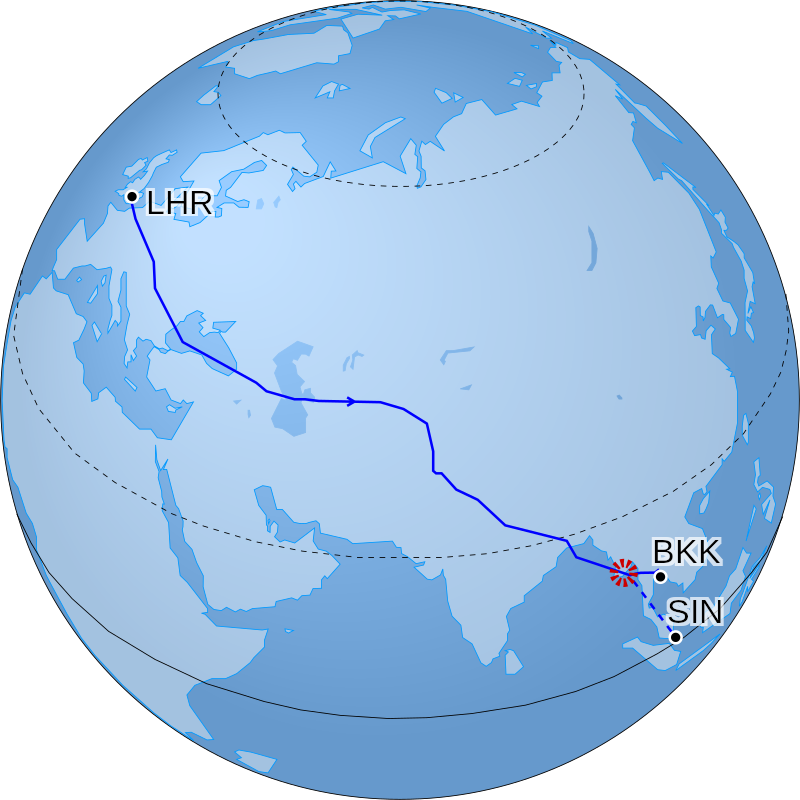
The intended flight path versus where the Singapore Airlines flight SQ321 landed after experiencing clear air turbulence.
The most glaring example of turbulence was the BOAC Flight 911. This flight, which took off in the backdrop of the smoldering ashes of Canadian Pacific Air 402, crashed due to severe air turbulence itself which took the lives of 113 passengers on board and 11 crew members.
With global warming on the rise and various reports of extreme weather events worldwide, the aviation sector has to cope with the possibility of the cases mentioned above, which we sometimes believe have been buried under the rubble of posterity, returning to haunt us. So how is the aviation community, as a whole, dealing with such changes?
The Increasing Incidents of Air Turbulence
Air turbulence incidents have increased worldwide, causing concern for the aviation industry. The US National Transportation Safety Board (NTSB) reports that “head-slamming” turbulence has become the most frequent type of airline accident.
The New York Times cited the last incident of a flight operated by an American airline that resulted in the death of a passenger:
“The last time a passenger on a commercial flight operated by an American airline died from a turbulence-related injury was in 1997, when a United Airlines flight from Tokyo to Honolulu experienced severe turbulence over the Pacific Ocean, according to an N.T.S.B. investigation. The passenger was not wearing a seatbelt and flew up from her seat, possibly striking her head on the luggage bin, according to the investigation. In 1990, an 84-year-old died from injuries sustained weeks earlier when an Eastern Air Lines flight encountered turbulence on the way to Palm Beach International Airport in Florida..”

Turbulence in the tip vortex from an airplane wing passing through coloured smoke
When turbulence does hit an aircraft, cabin crew are 24 times more likely to sustain injuries than passengers in accidents involving turbulence. Turbulence is a notable cause of accidents and injuries during flights, accounting for 37.6% of all accidents on larger commercial airlines between 2009 and 2018, according to a National Transportation Safety Board report from 2021. These incidents highlight the potential harm that turbulence can cause to aircraft, passengers, and crew and the need to address this issue.
How People on Board Perceive Turbulence
Turbulence can be a harrowing experience for even the most seasoned flyers. It can make passengers feel like they are on a rollercoaster, and it’s no secret that many people find it uncomfortable, if not downright frightening. Turbulence can be mild, moderate, or severe, and passengers experience it differently depending on its severity.
Mild turbulence feels like a slight vibration or shaking of the aircraft, similar to driving on a bumpy road. Moderate turbulence can cause the aircraft to bounce and sway, making walking around the cabin difficult or even performing tasks.
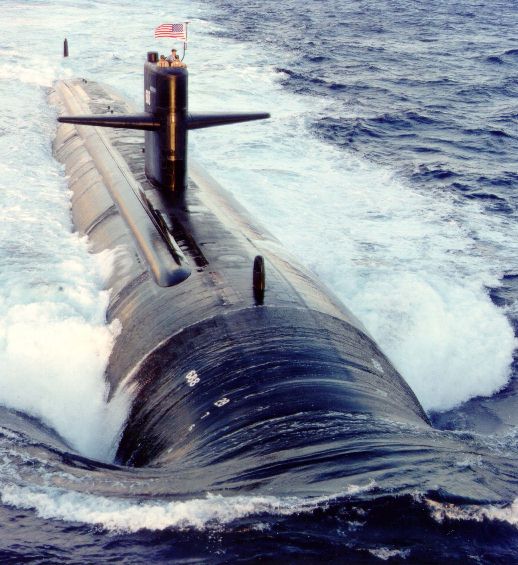
Turbulent water flow over the hull of a submarine. As the relative velocity of the water increases turbulence occurs.
Severe turbulence, as the word suggests, is intense and causes the aircraft to drop suddenly, making passengers feel weightless or as if being pulled out of their seats. It can be particularly frightening for passengers and crew.
How Climate Change Affects Turbulence
A recent study from the University of Reading in the UK revealed frightening numbers behind the rise in turbulence:
“At a typical point over the North Atlantic – one of the world’s busiest flight routes – the total annual duration of severe turbulence increased by 55% from 17.7 hours in 1979 to 27.4 hours in 2020…Moderate turbulence increased by 37% from 70.0 to 96.1 hours, and light turbulence increased by 17% from 466.5 to 546.8 hours.”
Professor Paul Williams, the researcher and scientist who co-authored the study, said:
“Following a decade of research showing that climate change will increase clear-air turbulence in the future, we now have evidence suggesting that the increase has already begun. We should be investing in improved turbulence forecasting and detection systems, to prevent the rougher air from translating into bumpier flights in the coming decades.”

Photo: Alan Hughes | Wikimedia Commons
Rising temperatures are causing wind shear, a rapid change in wind direction and speed over a short distance in the atmosphere, to become 15% stronger than it was in the 1970s. Further, the study also suggests that this phenomenon could place at least a hundred aerodromes, including New York, Bangkok Suvarnabhumi, and London City Airport, below sea level.
The impact of climate change on turbulence is a stark reminder of the far-reaching effects of global warming.
Turbulence Unmasked: The Secret of Wind Shear Revealed
To get a clear picture of what causes turbulence, we must understand a weather phenomenon called wind shear. Wind shear refers to a sudden change in wind speed or direction over a short distance in the atmosphere.
Wind Shear is often regarded as a variant of the mountain waves, the same type of waves that resulted in the fatal crash of Iran Aseman Airlines Flight 3704 in Mount Dena, and partially caused the world’s most dangerous airport before Lukla- the Mingbo airport to shut down. The presence of an obstruction like that of a mountain changes the direction of wind fore and aft of the mountain considerably.

Cirrus uncinus ice crystal plumes showing high-level wind shear, with changes in wind speed and direction
Wind shear significantly contributes to turbulence, causing an aircraft to bounce and sway as it encounters powerful currents. Commercial aircraft typically fly above wind shear patterns to avoid frequent encounters.
However, turbulence can still occur at extremely high altitudes as well. Clear-air turbulence, which occurs in the absence of clouds, is generated by wind shear. As wind shear becomes stronger due to climate change, the likelihood of encountering clear-air turbulence increases.
The Best Tools for Navigating Turbulent Skies
The aviation industry certainly needs to adapt to the increasing frequency and severity of turbulence caused by climate change. Better weather forecasting and new aircraft designs are some of the current efforts to reduce turbulence. Nevertheless, other alternative measures can be taken to address turbulence in the future.
Weather Tracking Systems
Advanced radar systems use a combination of ground-based and onboard radar systems to detect storms and turbulence in the skies. The data collected by these radar systems is then transmitted to the cockpit in real-time, providing pilots with up-to-the-minute information on weather conditions.
Using this real-time data, pilots have the flexibility to adjust their flight path and speed to avoid areas of turbulence and storms. This data not only helps to provide a smoother and more comfortable flight for passengers but also enhances safety by reducing the risk of damage to the aircraft.
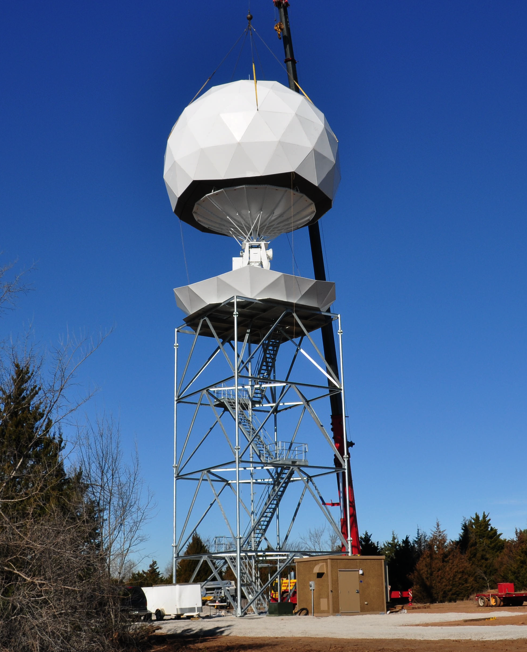
In addition, these radar systems can also detect other hazards, such as wind shear and icing conditions, which can pose a significant risk to aircraft.
Turbulence Detection Technologies
Early detection acts as a key when it comes to turbulence, and that’s where these new technologies come in.
Lasers are used to detect turbulence ahead of the aircraft. Pilots are given a heads-up on what’s coming up and can adjust their flight path and speed accordingly.
One of the biggest benefits of these turbulence detection technologies is that they allow pilots to adjust before they even reach the turbulent area. This means that they can avoid the rough patch altogether, which not only provides a smoother ride but also helps to reduce the risk of damage to the aircraft.
Advanced Pilot Training
Superior flight techniques include simulation training to help pilots practice responding to different types and levels of turbulence. These techniques provide them with appropriate instructions to access real-time turbulence data and other resources to help them make informed decisions during flight.
In addition, airlines have started implementing structural changes in aircraft design to make them more resilient to turbulence. This includes strengthening the structural components of aircraft, such as the wings, to withstand turbulence forces better.
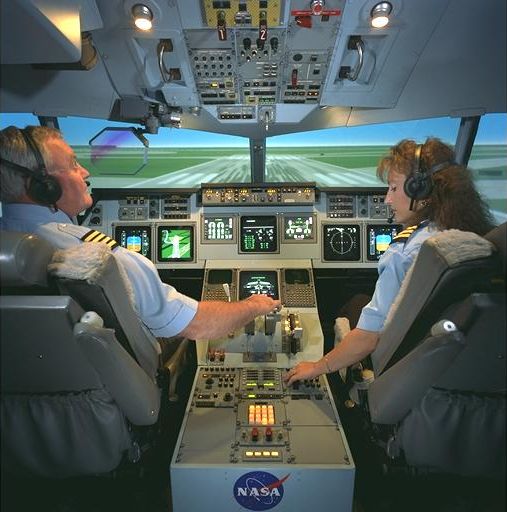
Moreover, airlines have started to improve the information provided to passengers about turbulence, including explanations of what turbulence is, what causes it, and what actions must be taken to minimize its impact.
Some airlines have also started to provide passengers with real-time turbulence information during the flight to help them better prepare for and manage the effects of turbulence.
Conclusion
From developing alternative fuels and implementing sustainable practices to improving weather forecasting and air traffic management systems, effective steps can be implemented to adapt to the changing climate and ensure the safety and sustainability of air travel. Each executive aviation authority must be responsible for recognizing the gravity of this issue and working towards a more resilient and sustainable future for air travel.
